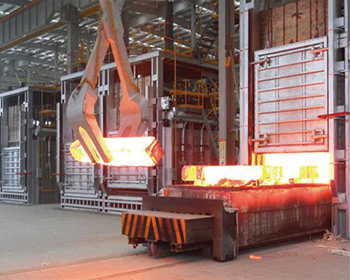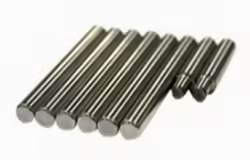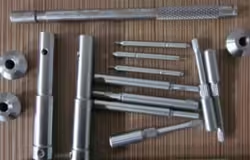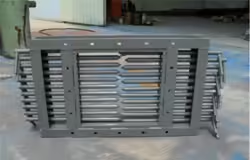
How to Select the Right Alloy Steel Round Bar
Introduction
Alloy steel round bars are cylindrical bars made from alloy steel, which is steel that contains additional elements to enhance its properties. These elements can include manganese, nickel, chromium, and molybdenum, among others. The resulting alloy steel possesses improved hardness, strength, and resistance to wear compared to standard carbon steel. This blog will delve into the various aspects of alloy steel round bars, helping you make informed decisions when selecting them for your projects.
Understanding the Properties of Alloy Steel Round Bar

Mechanical Properties
Alloy steel round bars exhibit superior mechanical properties compared to regular steel. Some of the key mechanical properties include:
- Tensile Strength: The maximum amount of tensile (pulling) stress that a material can withstand without breaking.
- Yield Strength: The stress at which a material begins to deform plastically.
- Ductility: The ability of a material to undergo significant plastic deformation before rupture.
Chemical Composition
The specific alloying elements used in the steel can significantly impact its properties. For instance:
- Chromium: Increases hardness and resistance to wear.
- Nickel: Enhances toughness and impact strength.
- Molybdenum: Improves hardenability and strength at high temperatures.
A deeper understanding of the chemical composition will help you choose the right alloy steel round bar for your application.
Corrosion Resistance
Alloy steel round bars can be engineered to provide enhanced corrosion resistance, making them suitable for harsh environments. The addition of alloying elements can form protective layers on the steel surface, preventing rust and degradation over time.
Factors to Consider When Selecting Alloy Steel Round Bar
Application Requirements
The first step in selecting the right alloy steel round bar is understanding the specific application requirements. Consider the following:
- Load-Bearing Capacity: Determine the amount of stress the round bar will need to endure.
- Environmental Conditions: Consider exposure to chemicals, humidity, and temperature fluctuations.
- Required Mechanical Properties: Identify any specific strength, ductility, or toughness requirements.
Standard Specifications
Alloy steel round bars come in various grades and specifications. Familiarize yourself with industry standards such as ASTM (American Society for Testing and Materials) or SAE (Society of Automotive Engineers) to ensure compliance with quality and performance requirements.
Diameter and Length
The dimensions of the alloy steel round bar will affect its performance in your application. Factors to consider include:
- Diameter: The thickness of the bar can influence its strength and weight.
- Length: Determine how much length you need for your application, keeping in mind that longer bars may require special handling and storage.
Surface Finish
The surface finish of the alloy steel round bar can impact its performance, especially in applications requiring tight tolerances. Common surface finishes include:
- Hot-Rolled: Typically less expensive, with a rough surface finish.
- Cold-Rolled: Offers a smoother finish and tighter tolerances but at a higher cost.
Cost Considerations
Budget constraints are a critical factor when selecting materials. While alloy steel round bars may have a higher upfront cost compared to other materials, their long-term durability and performance can lead to cost savings over time. Conduct a cost-benefit analysis to determine the most economical option for your specific needs.
Table: Common Grades of Alloy Steel Round Bar

| Grade | Composition | Applications | Key Properties |
|---|---|---|---|
| AISI 4130 | 0.28-0.33% C, 0.4-0.6% Cr, 0.8-1.1% Mn | Aerospace, Automotive | High strength, ductility |
| AISI 4140 | 0.38-0.43% C, 0.8-1.1% Cr, 0.75-1.0% Mn | Machinery, Automotive | Toughness, wear resistance |
| AISI 4340 | 0.38-0.43% C, 1.5-2.0% Ni, 0.7-0.9% Cr | Aircraft components, Gears | High strength, fatigue resistance |
| AISI 8620 | 0.18-0.23% C, 0.4-0.6% Cr, 0.6-0.9% Ni | Heavy-duty machinery, Shafts | Good hardenability, toughness |
This table provides an overview of common grades of alloy steel round bars, including their composition, applications, and key properties.
Conclusion: Making an Informed Decision
Selecting the right alloy steel round bar requires careful consideration of various factors, including application requirements, mechanical properties, and cost. By understanding the properties and specifications of different grades, you can make informed decisions that align with your project needs.
Alloy steel round bars offer numerous advantages, including improved strength, durability, and versatility, making them a valuable choice for a wide range of applications. Whether you’re in the aerospace, automotive, or construction industry, choosing the right alloy steel round bar can significantly impact the performance and longevity of your products.
FAQ
What is the difference between alloy steel and carbon steel?
Alloy steel contains additional elements that enhance its properties, such as strength and corrosion resistance, whereas carbon steel primarily consists of iron and carbon.
How do I determine the right diameter for my alloy steel bar?
Consider the load-bearing capacity, required strength, and specific application needs to determine the appropriate diameter for your project.
Are there specific standards for alloy steel bars?
Yes, industry standards such as ASTM and SAE outline specifications and grades for alloy steel bars to ensure quality and performance.
Can I get customized alloy steel round bars?
Many suppliers offer customization options for alloy steel round bars, including specific lengths, diameters, and surface finishes tailored to your needs.
How do I maintain alloy steel round bars?
To maintain alloy steel round bars, store them in a dry environment, avoid exposure to corrosive substances, and inspect them regularly for any signs of wear or damage.






